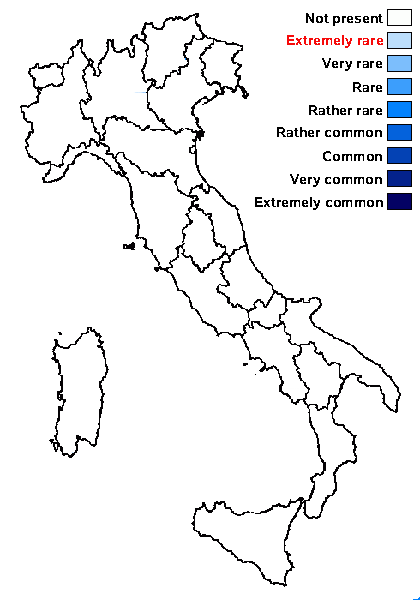Opegrapha demutata Nyl.
Flora, 62: 358, 1879
Synonyms:
Distribution:
Description: Thallus crustose, thinly episubstratic, continuous to rimose-areolate, white, grey-white or cream-white. Apothecia lirelliform, black but usually white-pruinose, short-elongate to rarely orbicular, (0.3-)0.4-0.7(-1) x 0.12-0.2 mm, 40-80 µm tall, semi-immersed to subsessile, simple or sparingly branched, sometimes surrounded by a pseudothalline exciple, the disc slit-like or finally partly open. Proper exciple black, carbonized, closed below the hymenium, K-; epithecium brownish; hymenium colourless, 60-70 µm high, I+ blue in upper part, I+ reddish in lower part; subhymenium reddish brown. Asci 8-spored, broadly club-shaped, the inner layer of endoascus amyloid in upper part, with a reduced ring and ocular chamber (Varia-type). Ascospores 3-septate, hyaline, (12-)14-18 x 3-5 µm, with a thin, often poorly evident gelatinous sheath. Pycnidia black, sessile. Conidia thread-like, apparently aseptate, (8-)11-15(-20) x 1.5-2 µm, straight or slightly curved. Photobiont trentepohlioid. Spot tests: thallus K-, C-, KC-, P-. Chemistry: without lichen substances. Note: a rare, mainly western species growing on base-rich siliceous rocks, incl. bricks, in rather shaded situations; reported from several stations in Central Europe, incl. Switzerland; to be looked for in Italy.
Growth form: Crustose
Substrata: rocks
Photobiont: Trentepohlia
Reproductive strategy: mainly sexual
Poorly known taxon in need of further study

Predictive model
Growth form: Crustose
Substrata: rocks
Photobiont: Trentepohlia
Reproductive strategy: mainly sexual
Poorly known taxon in need of further study

Predictive model


